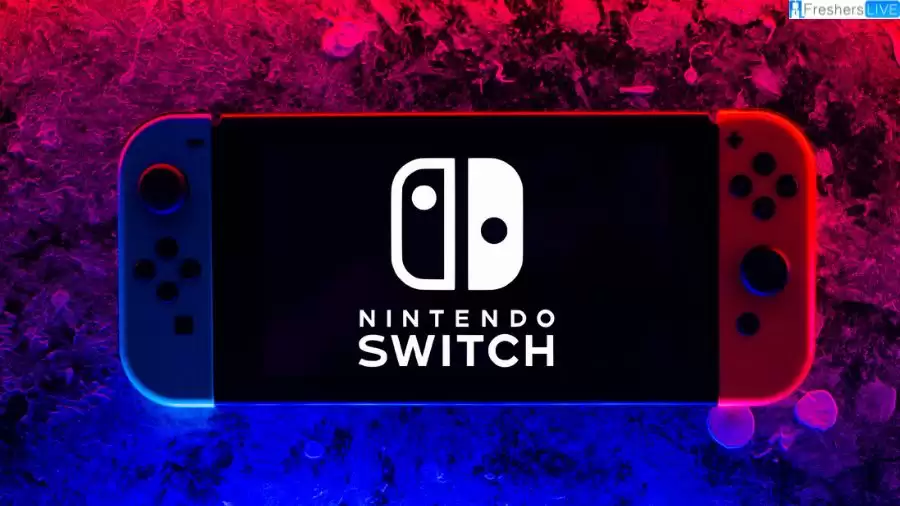Why is My Nintendo Switch Not Turning on? How to Fix This Issue?
by Janani
Updated Jul 01, 2023

Nintendo Switch Not Turning On
The Nintendo Switch is a popular gaming console known for its versatility and portability. However, there may be instances where your Nintendo Switch fails to power on, leaving you frustrated and unable to enjoy your favorite games.
Encountering a Nintendo Switch that won't turn on can be frustrating, but with some troubleshooting steps, you can often get it back up and running. Remember to check the battery, power adapter, and connections first, and try performing a forced restart if needed. If the issue persists, it may require further assistance from Nintendo or a repair service to diagnose and fix any potential hardware faults.
In this article, we will explore some common reasons why your Nintendo Switch might not be turning on and provide potential solutions to help you get back to your gaming adventures.
Why is My Nintendo Switch Not Turning On?
The Nintendo Switch can experience various power-related issues, including faulty batteries, controllers, charge ports, power buttons, or even a faulty motherboard. Here's a summary of the troubleshooting steps for each problem:
1. Battery Issues:
2. Controller Issues:
3. Charge Port Issues:
4. Issues with Power Button:
5. Motherboard Issues:
How to Fix Nintendo Switch Not Turning On?
Here's a detailed rephrasing of the provided instructions for troubleshooting a Nintendo Switch that won't turn on:
Manually turn on your Nintendo Switch
Charge your Nintendo Switch
Check your device for physical damage
Inspect your power cable for damage
Try a different power source
Perform a soft reset
Attempt another reset
Here are some basic troubleshooting steps to address common issues with the Nintendo Switch:
These steps serve as a starting point for troubleshooting common problems with the Nintendo Switch.
Nintendo Switch
The Nintendo Switch is a hybrid video game console released by Nintendo on March 3, 2017. It can be used as both a home console and a portable device. The console features a tablet with detachable Joy-Con controllers that support various play styles, including handheld, docked, and tabletop modes. It supports online gaming and local multiplayer, and its games are available in both physical cartridges and digital downloads.
The Switch was developed as a response to Nintendo's financial losses and market competition. It utilizes standard components, making it developer-friendly and compatible with existing game engines. Nintendo collaborated with third-party developers to ensure a diverse game library. The console exceeded sales expectations and outsold its predecessor, the Wii U, in a short period.
By March 2023, the Nintendo Switch has sold over 125 million units worldwide, becoming Nintendo's best-selling home console and the third-best-selling game console overall. Its success is attributed to popular first-party titles like The Legend of Zelda: Breath of the Wild, Mario Kart 8 Deluxe, Super Mario Odyssey, Super Smash Bros. Ultimate, Pokémon Sword and Shield, Animal Crossing: New Horizons, and Pokémon Scarlet and Violet.
The Nintendo Switch has established itself as a major player in the gaming industry, competing with consoles from Microsoft and Sony. Its unique hybrid design and strong game library have contributed to its popularity among a wide range of players.
Why is My Nintendo Switch Not Turning On? - FAQ
Faulty Battery, Faulty Controller, Faulty Charge Port, Power Button, and Faulty Motherboard are some of the reasons for the Nintendo Switch not turning On issue.
The Nintendo Switch is a hybrid video game console released by Nintendo on March 3, 2017. It can be used as both a home console and a portable device, offering versatile gameplay options.
The Nintendo Switch supports various play styles, including handheld mode, docked mode (connected to a TV), and tabletop mode (using the built-in kickstand). Players can choose their preferred style for different gaming situations.
Games for the Nintendo Switch are available in both physical cartridges and digital downloads. You can purchase games either from retail stores or the Nintendo eShop, the console's digital storefront.
Yes, the Nintendo Switch supports both online gaming and local multiplayer. You can play with friends or other players online through Internet connectivity, or connect multiple consoles locally for local multiplayer sessions.
The Nintendo Switch's success can be attributed to its unique hybrid design, which offers flexibility and convenience to players. Additionally, the strong game library, including popular titles like The Legend of Zelda: Breath of the Wild, Mario Kart 8 Deluxe, and Animal Crossing: New Horizons, has played a significant role in its popularity.







